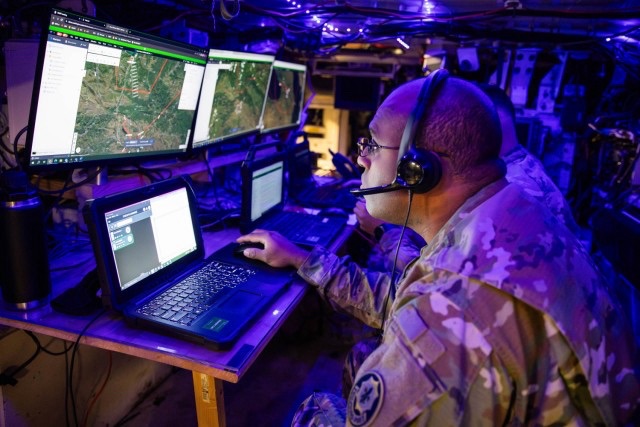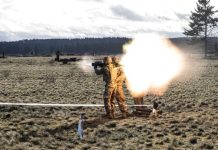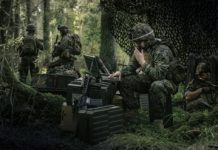
WASHINGTON — To better acquire and access data on the battlefield, the Army has revamped how it integrates data across warfighting functions, an Army intelligence leader said.
To continue on its maturity path in fiscal year 2024, the Army needs a “cultural shift” to organically transform how the service uses data, said the service’s chief intelligence officer David Pierce.
“While the Army is taking the right steps toward becoming more data-centric, technology is not enough to solve enterprise data challenges,” Pierce said. “Cultural shifts are required to change how the Army views the value of data.”
The branch will take its next steps toward becoming more data centric by moving from a “managed” maturity level to a “proactive” one, Pierce said. This includes bolstering its data literacy programs, improving data management processes, and raising the level of how Army intelligence shares and communicates with data, he added.
To improve the Army’s ability to work with data, Soldiers and civilians of all ranks must become more data literate; improving how they write, understand, analyze, and communicate information.
Introduced in fall 2022, the Army Data Plan established a service-wide framework that adopted a new governance model focused on giving the warfighter advantages through proper data use. The initiative falls in line with the Secretary of the Army Christine E. Wormuth’s pledge for the Army to become more data centric.
Accurate, timely data will enable commanders to make informed battlefield decisions according to the Army’s Data Plan.
The Army changed roles and responsibilities for to become more effective in its data management process, Pierce said. Army units assigned “data champions” to foster a culture of data centricity. Pierce added that Army Intelligence has encouraged innovation by supporting small, successful intelligence communities including one at Fort Eisenhower, Georgia.
There, the 513th Military Intelligence Brigade Pierce said Army Intelligence wanted to learn from the brigade’s successes and adopt and scale their practices across all of Army Intelligence.
Similar to what the 513th created at Fort Eisenhower, Army Intelligence and Security Command, or INSCOM, intelligence data science groups scheduled “hackathons” where intelligence professionals could meet and share ideas while solving real world challenges.
The 513th MIB and the U.S. Military Academy at West Point formed a Data Literacy Task Force to improve the unit’s understanding and use of data. The task force achieved that goal by having intelligence professionals take Data 101, West Point’s data literacy course.
The task force encourages innovative solutions while boosting data literacy and readiness, which in turn helps intelligence brigades in real world missions, said Col. Molly Solsbury, 513th MI Brigade commander. Pierce said data accessibly also plays a significant role in multi domain operations, part of joint, all-domain operations.
“Multi-domain operations is largely informed by what a commander can see, both strategically across the globe and within their battlespace,” Pierce said. “Access to the data … is critical to achieving decision advantage. While the Army still has improvements it needs to make to its sensor capacity, the data we have today still needs to be able to be discovered and delivered to the right platforms and tools of choice.
Pierce said that as the Army’s access to data expands, the service will have more emerging opportunities to find insights that inform commanders’ decisions and create better strategic outcomes. Accessible data will also raise the speed of those decisions.”
“The landscape of data has foundationally changed with globalization and the overwhelming increase of digital information,” Pierce said. “While data has always been critical, the growing scale with which the Army works with data and the breadth of available digital systems and networks that connect them changes how the Army consumes and transforms data into actionable insights and knowledge that commanders can use for decision-making.”
Pierce added that the service’s ability to access and use data directly impacts the Army’s global operations dedicated to addressing worldwide security threats.
By Joe Lacdan, Army News Service
You can skip to the end and leave a response. Pinging is currently not allowed.








